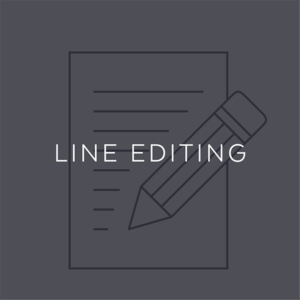 After you’ve settled your plot, characterization, and other big-picture elements, line editing can focus on artistry and voice or on trimming the fat from your word count. Line edits examine if a manuscript’s prose suits its purpose and audience by asking questions like these:
After you’ve settled your plot, characterization, and other big-picture elements, line editing can focus on artistry and voice or on trimming the fat from your word count. Line edits examine if a manuscript’s prose suits its purpose and audience by asking questions like these:
- Is this paragraph doing more than one thing?
- Is this sentence/clause/word necessary? Is it sufficient?
- Could this be phrased more efficiently or elegantly?
- Does this word choice suit the character’s voice?
- Is this syntax varied enough for this scene?
- Does this follow established grammar and usage rules sufficiently for the author’s purpose and voice?
—Charlie N. Holmberg, WSJ bestselling fantasy author
Line editing is about clarity, artistry, and voice. If your book is too long for your purposes, line editing can also focus on efficiency. During the line edit, most copyediting issues will be spotted and addressed, but line edits usually include enough changes that it’s wise to do a cleanup edit before publishing your book.
What a Line Edit Includes
Line editing includes one round of edits to edit for organization and logical flow on a sentence and paragraph level; to ensure the work adheres to industry standards for book publishing; to improve clarity and elegance; to correct grammar, usage, punctuation, and syntax issues in ways appropriate to the book; and to draw attention to word choices inconsistent with the established character, tone, or plot.
Line editing often catches most copyediting-level issues as well, but because line editing can include significant revisions to sentences and paragraphs, it’s wise to do a round of clean-up editing afterward.
Pricing
- Line Editing: $0.04/word
Learn More
Learn more about the other types of editing Looseleaf offers or visit our resources page for more information about editing, book design, and writing.



